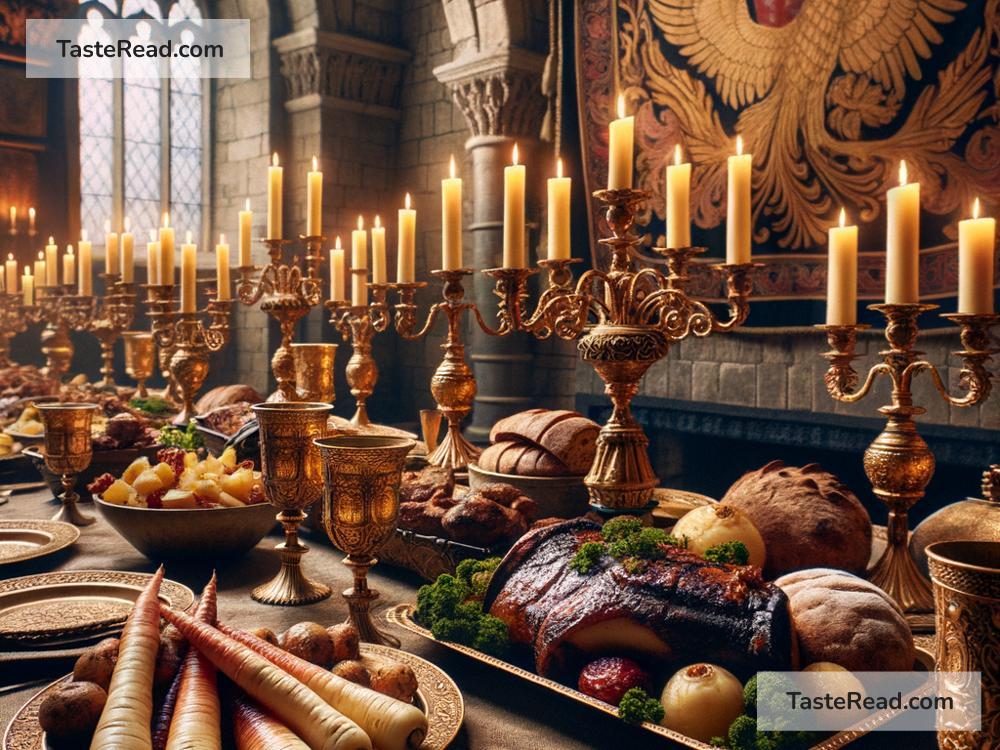The Surprising Historical Significance of Parsnips in Medieval Feasts
When you think of medieval feasts, you might imagine roasted meats, flagons of ale, and grand banquets held in castle halls. But there’s one humble vegetable that played an important role in the diets of the Middle Ages: the parsnip. Yes, the pale, carrot-like parsnip may not be the star of the modern dinner table, but in medieval Europe, it held a surprising significance.
Parsnips: A Staple of the Medieval Diet
Parsnips are root vegetables that are closely related to carrots. They are creamy white, slightly sweet, and grow well in cold climates. In medieval times, people didn’t have access to fancy supermarkets or exotic ingredients. Instead, they relied heavily on crops they could grow themselves. Parsnips were a popular choice because they thrived in cooler weather and could remain in the ground throughout the winter months, providing a reliable food source when other crops were scarce.
Unlike today, where people often choose food based on flavor or preference, medieval diets prioritized survival. Parsnips were one of the few vegetables available year-round, making them a valuable staple for peasants and nobles alike.
Why Were Parsnips So Popular?
There are a few reasons why parsnips were highly regarded in medieval cuisine:
-
Sweetness Before Sugar: Today, we use sugar to sweeten almost everything, from coffee to desserts. But back in the Middle Ages, sugar was a rare luxury, reserved for the wealthiest people. Instead, parsnips provided a natural sweetness that people used in their cooking and baking. Parsnips could be boiled, mashed, roasted, or even baked into sweet treats. Their sugary flavor made them a versatile ingredient, and they were often paired with honey or spices.
-
Nutrition: Medieval food wasn’t just about flavor; it was about staying alive and healthy. Parsnips are rich in nutrients. They contain fiber, vitamin C, potassium, and folate, which were essential for maintaining health in an era when diseases and malnutrition were common. Since medical knowledge was limited, food was one of the main tools people had to keep their bodies strong.
-
Filling and Cheap: Parsnips are hearty and filling, making them a great food for medieval peasants who needed energy for farming or other manual labor. Parsnips were also easy to grow and inexpensive, ensuring that even the poorest families could incorporate them into their meals.
Parsnips in Feasts and Celebrations
While parsnips were common in daily meals, they also made appearances in grand medieval feasts. For medieval nobility, feasts were a way to show off their wealth and generosity. These banquets often featured elaborate dishes and presentations, but amidst the swans, venison, and spiced wine, parsnips had their place.
Cooks in medieval kitchens were creative, often transforming simple ingredients into impressive dishes. Parsnips were mashed, stewed, or roasted with honey, spices like cinnamon or nutmeg, and even butter to enhance their flavor. They might be served alongside roasted meats or in pies that combined meat and vegetables. Some recipes even suggested mixing parsnips with other root vegetables, like turnips, for variety.
Interestingly, parsnips were also featured in desserts. Since medieval Europe didn’t have chocolate or many of the sweets we enjoy today, they relied on naturally sweet foods like parsnips and fruits to create puddings and cakes. Medieval cooks knew how to make the most of every ingredient, and the sweetness of parsnips made them ideal for both savory and sweet dishes.
The Decline of Parsnips
By the time the Renaissance rolled around, parsnips had started to lose their fame. As trade routes opened and sugar became more available, people turned to sweeter and more exciting ingredients for their meals. The rise of potatoes, which were brought to Europe from the Americas in the late 16th century, also contributed to the decline of parsnips. Potatoes became a new staple crop, replacing parsnips in many daily and festive dishes.
Today, parsnips are often overlooked—treated as a humble side dish or forgotten entirely. But in medieval Europe, they were an essential part of life. They carried people through cold winters, nourished the hardworking population, and even earned a place on the tables of kings and queens.
Reviving the Parsnip’s Legacy
Though parsnips are no longer as celebrated as they were in medieval times, they are still a delicious and nutritious vegetable worth trying. Roasting them brings out their natural sweetness, and they pair wonderfully with herbs and spices. Many chefs today are rediscovering the parsnip and incorporating it into modern dishes.
If you’re ever at the grocery store and spot parsnips on the shelf, take a moment to think about their fascinating history. They may not have the glamour of sugar or the fame of potatoes, but parsnips played a crucial role in feeding medieval Europe. From simple meals to lavish feasts, this humble root vegetable was once a culinary treasure that kept people satisfied and alive through harsh winters.
The next time you prepare a feast—even if it’s just for yourself—consider adding parsnips to the menu. You’ll be honoring a vegetable that has stood the test of time and contributed to medieval culture in ways you might never have guessed.


